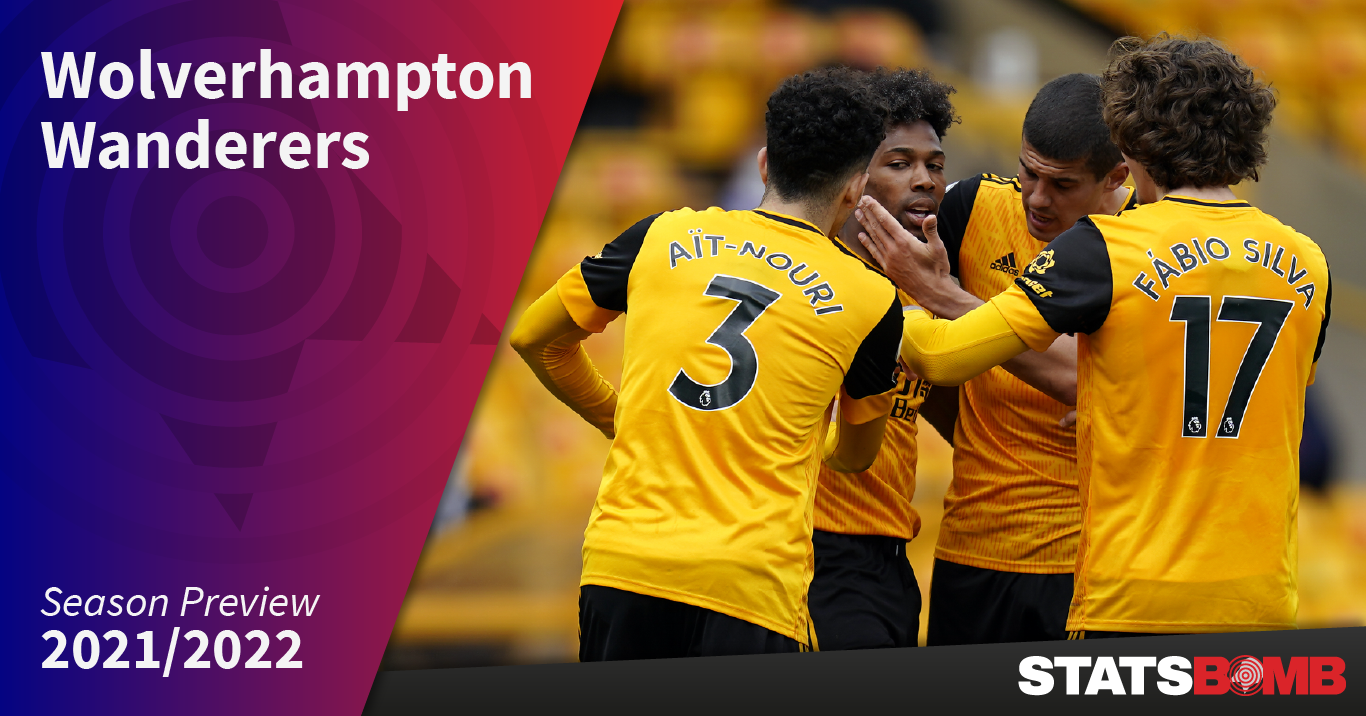Wolverhampton Wanderers hit the ground running following their promotion to the Premier League in 2018, achieving consecutive seventh-place finishes in their first two seasons back in the top flight. But things didn’t go quite as smoothly for them last time around, and they come into the 2021-22 season seeking to reestablish themselves as a top-half side.
After two seasons of positive goal differences and near-60-point hauls, Wolves finished down in 13th last season, with 45 points and a -16 goal difference. There was a pretty stark drop off in the underlying numbers, too, from expected goal (xG) differences of 10.84 and 11.51 in 2018-19 and 2019-20 respectively to a -2.86 difference in 2020-21.
In 2019-20, their performances were extremely controlled; last season, things started to fray at the edges. Their worst four results and three of their worst four individual match xG differences across the last three seasons came in 2020-21.
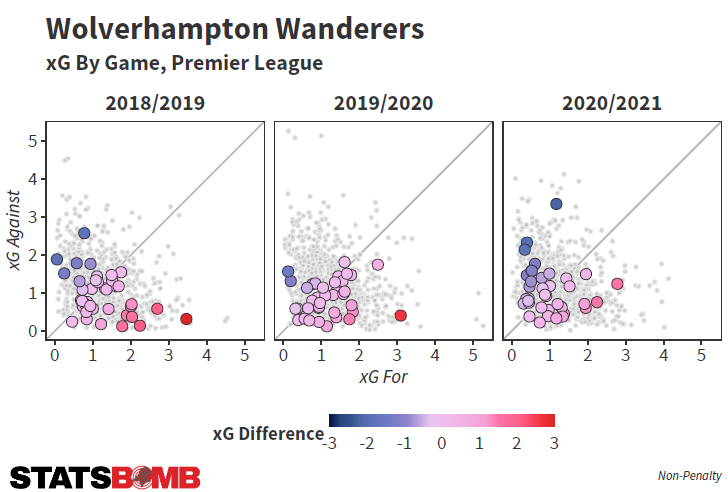
The downturn in their season-long xG difference was evenly distributed between attack and defence. They were roughly seven expected goals worse off at both ends.
In attack, their set piece production remained stable, but Wolves really struggled to create good chances in open play. They took a comparable number of shots season on season, but their open play xG production nevertheless plummeted from 0.9 xG per match in 2019-20 down to 0.68 xG per match in 2020-21. Only Sheffield United, West Bromwich Albion and Crystal Palace created less.
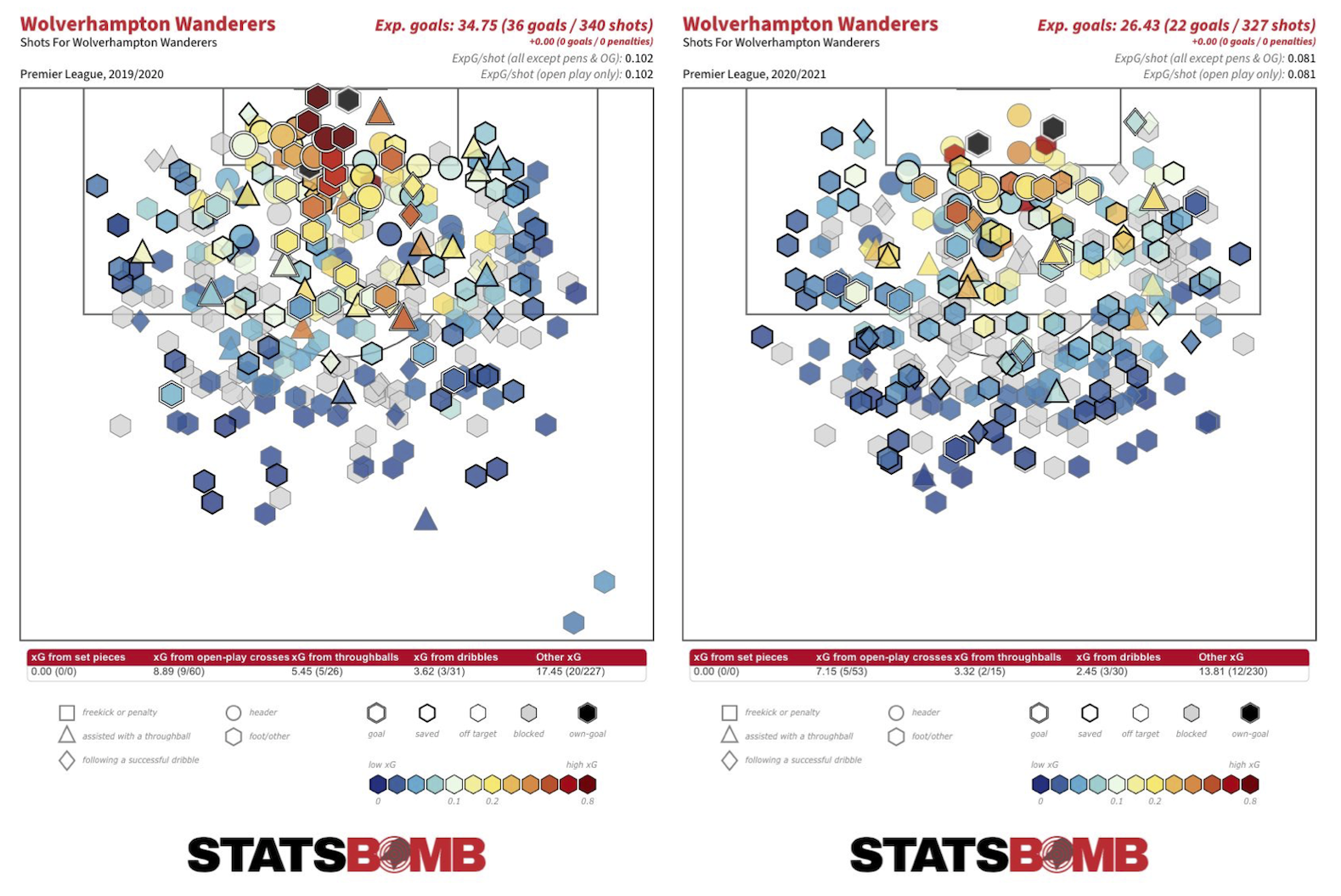
The culprit: the quality of their chances. Wolves had the worst average shot quality from open play in the league at 0.08 xG per shot. Over the course of the season, they actually created a league-sixth-high number of shots within 20 seconds of regaining possession -- the sort of transitional phases of play in which you’d expect them to be able to create better quality chances -- but even in those situations they generated the lowest quality opportunities in the league, right in line with their overall xG per shot.
It would be tempting to blame the sickening skull injury suffered by striker Raúl Jiménez away at Arsenal in late November and his subsequent absence for Wolves’ attacking issues. He was certainly a talismanic reference point at the centre of their attack that various experimentations with formations and personnel, including underwhelming January loan arrival Willian José, failed to adequately replace. Wolves were marginally better in terms of open play attacking output during the first nine matches of the season with him in the side, but not significantly enough so given the relatively small sample size to indicate his lack of availability from December onwards was the primary reason for their struggles.
In defence, Wolves gave up pretty much the same average quality of open play shot as in 2019-20 but just did so more often, conceding 27 more shots, 3.01 more xG and two more goals over the course of the campaign. Opponents found it easier to complete passes in the final metres of the pitch and created a higher volume of chances.
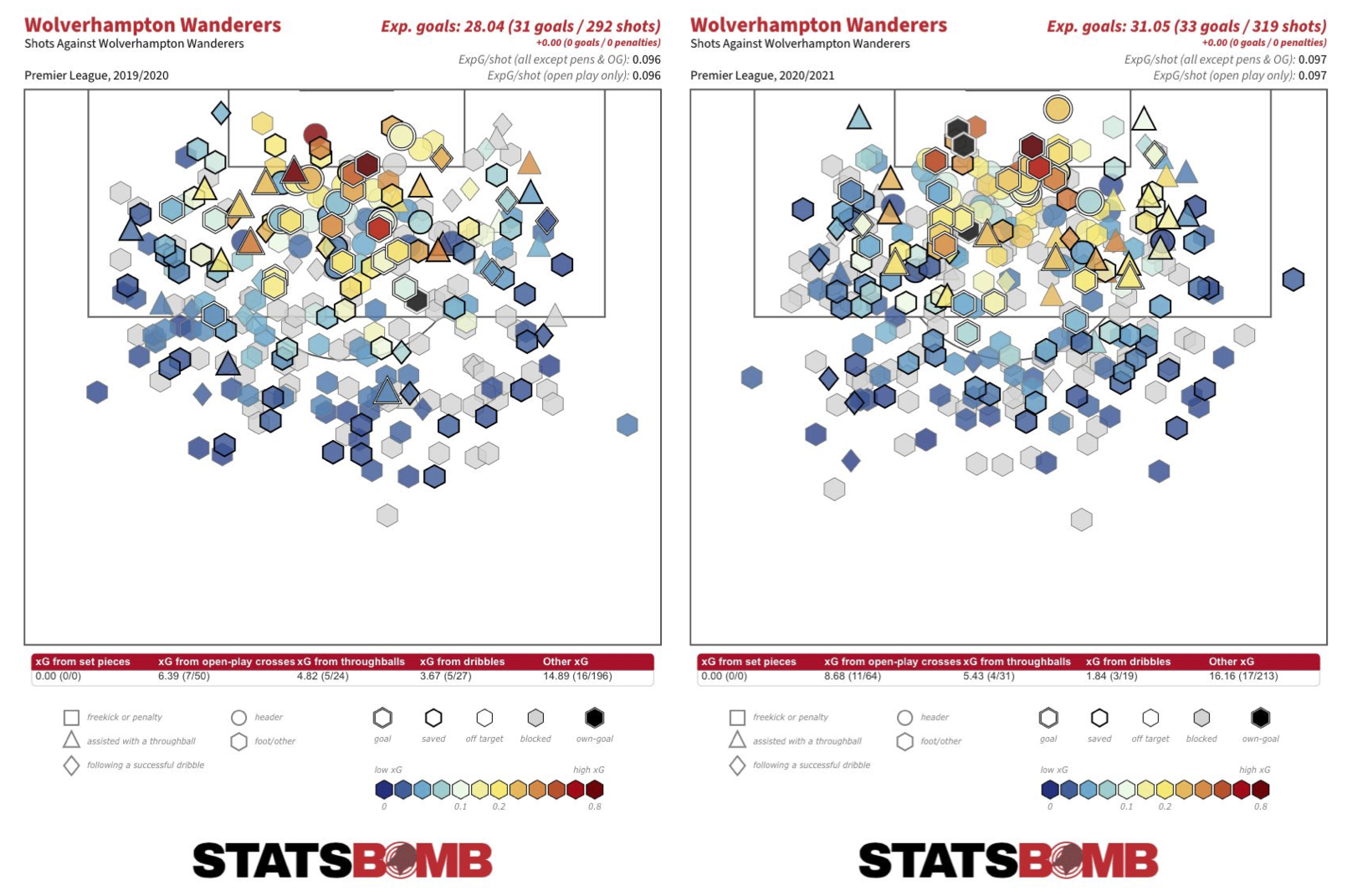
Wolves also also went from being one of the best teams in the league at defending set pieces in 2019-20 to a middle of the road outfit by the underlying numbers and one of the league’s worst in reality. Only five teams conceded more goals from set pieces than their total of 12.
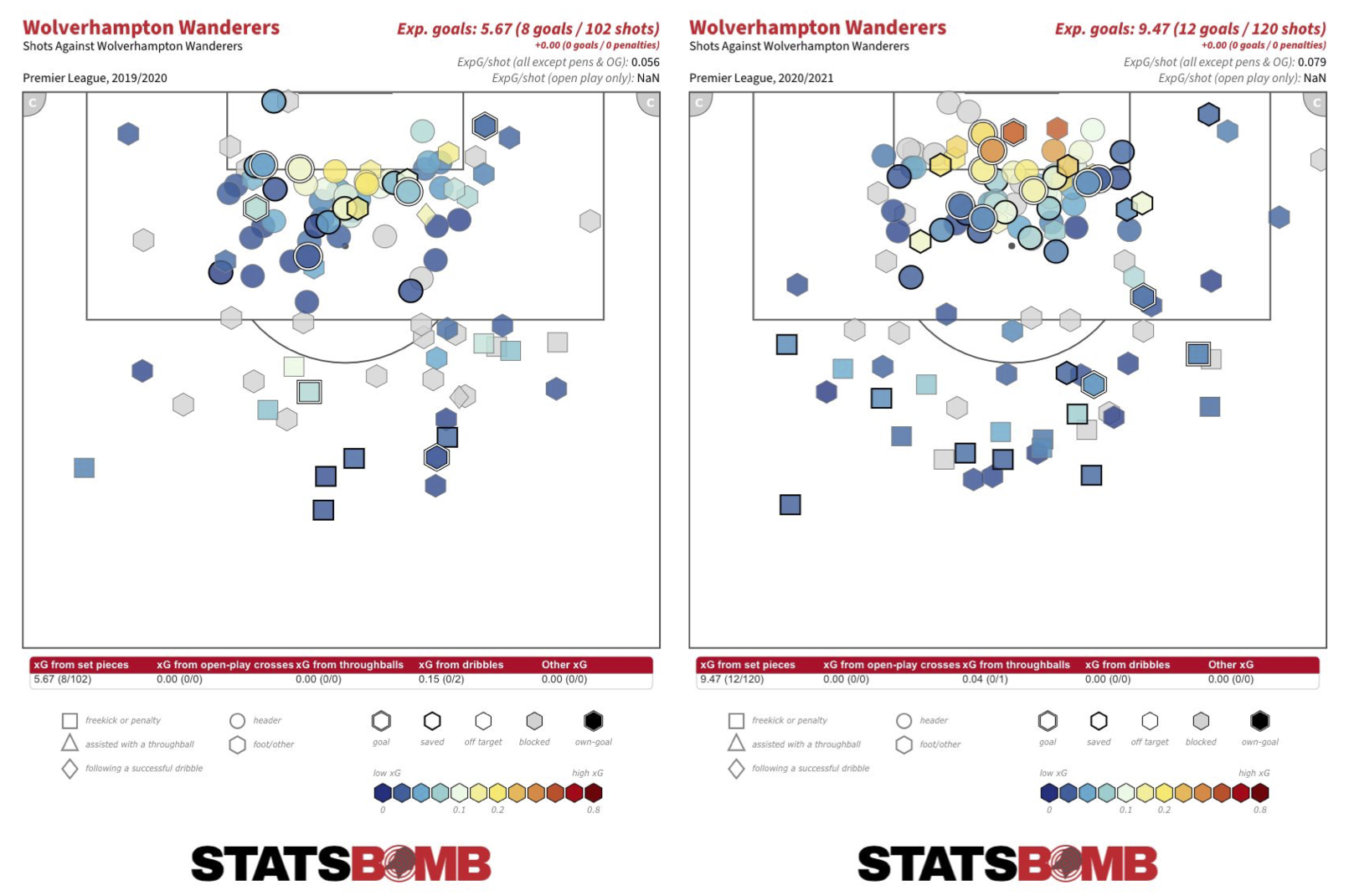
The downturn in pretty much all phases of play left coach Nuno Espirito Santo scrambling for solutions. The back three that had been the permanent setup in each of the club’s first two top-flight campaigns occasionally gave way to a back four. Those long diagonal balls out to the wing-backs that had been such an identifiable feature of Wolves’ play began to fade from view. By the end of the season, it was little surprise that Nuno’s four-year spell at the helm came to a close with a mutual parting of ways.
What went wrong? Could it be that the players were tired with Nuno’s approach, tired with Nuno himself or maybe just... tired? A relatively small squad saw nine players take part in more than 75% of the available minutes -- a league high alongside Burnley.
Wolves were clearly not as good as they had been in 2019-20 but even still their goal difference and points haul weren’t fully representative of the quality of their displays. An underperformance of the underlying numbers at both ends of the pitch allied to a -3 difference on penalty goals (lurching from a +3 difference in 2019-20) saw a -2.86 xG difference turn into a -16 goal difference.
It isn’t the worst situation for Nuno’s replacement Bruno Lage to walk into. His only previous experience as a head coach -- he was assistant to Carlos Carvalhal at both Sheffield Wednesday and Swansea City -- came at Benfica in his native Portugal, where in early January 2019, he stepped up from his role as B team coach to replace the sacked Rui Vitória. What followed was a remarkable second half of the campaign that saw the club romp to the title with 18 wins, one draw and zero defeats.
Lage's side scored an average of 3.79 goals per match along the way, and had comfortably the best goal and xG differences of any team.
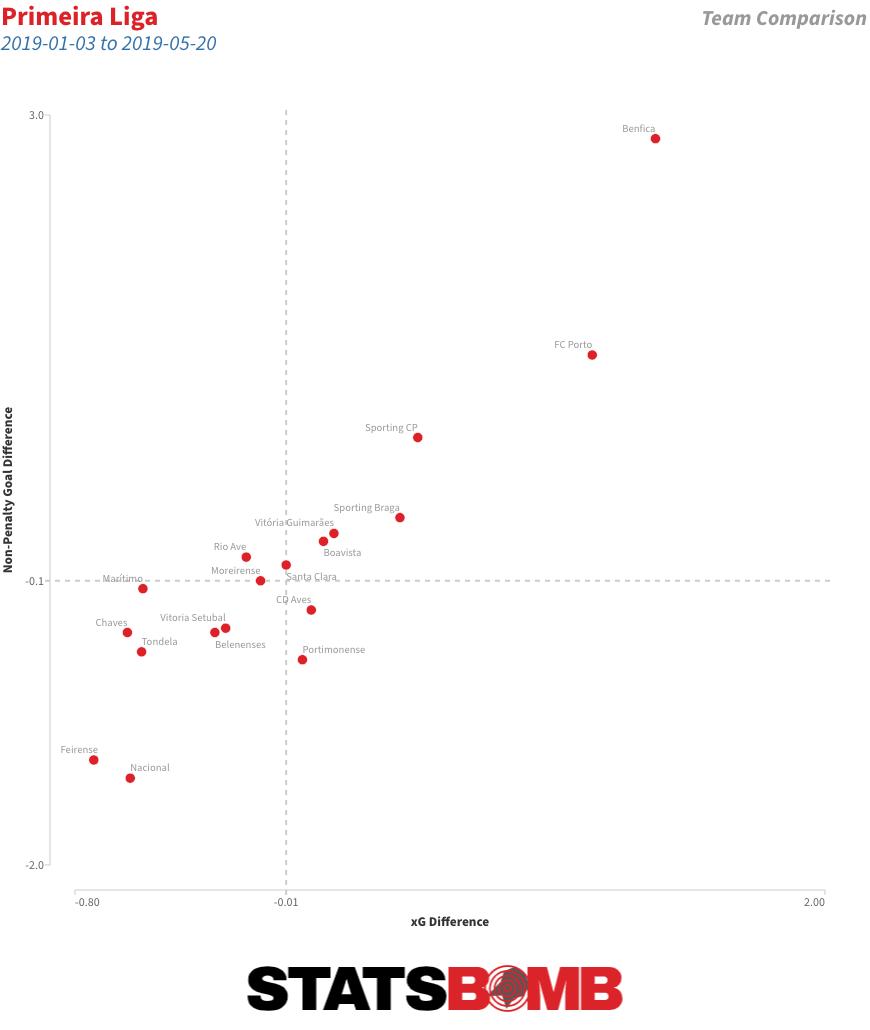
Benfica had played a 4-3-3 before Lage’s arrival but largely lined up in a 4-2-3-1 or 4-4-2 formation thereafter -- depending on the positioning of João Félix relative to the primary striker Haris Seferović -- something that continued into the 2019-20 season. Benfica again had the best xG difference in the league, but it was Porto who took the title by five points. Lage resigned five matches from the end of the campaign after a run of two wins, four draws and four defeats that had given Porto the upper hand.
While there have been a couple of deviations, the evidence of pre-season suggests that Lage will use the same formation at Molineux. While it would be unrealistic to expect him to play quite such dominant attacking football with a side who are not one of the primary powers of the Premier League, Wolves are nevertheless likely to employ a more front-foot approach than they did under Nuno, when they were one of the deepest defensive teams in the league.
Lage’s arrival aside, it has so far been a relatively quiet summer but one that has yielded what appear to be solid signings. Goalkeeper Rui Patrício departed to Roma to be replaced by another Portuguese custodian in José Sá, an over-performer of his post-shot xG numbers for Olympiakos in each of the last two Greek Super League seasons.
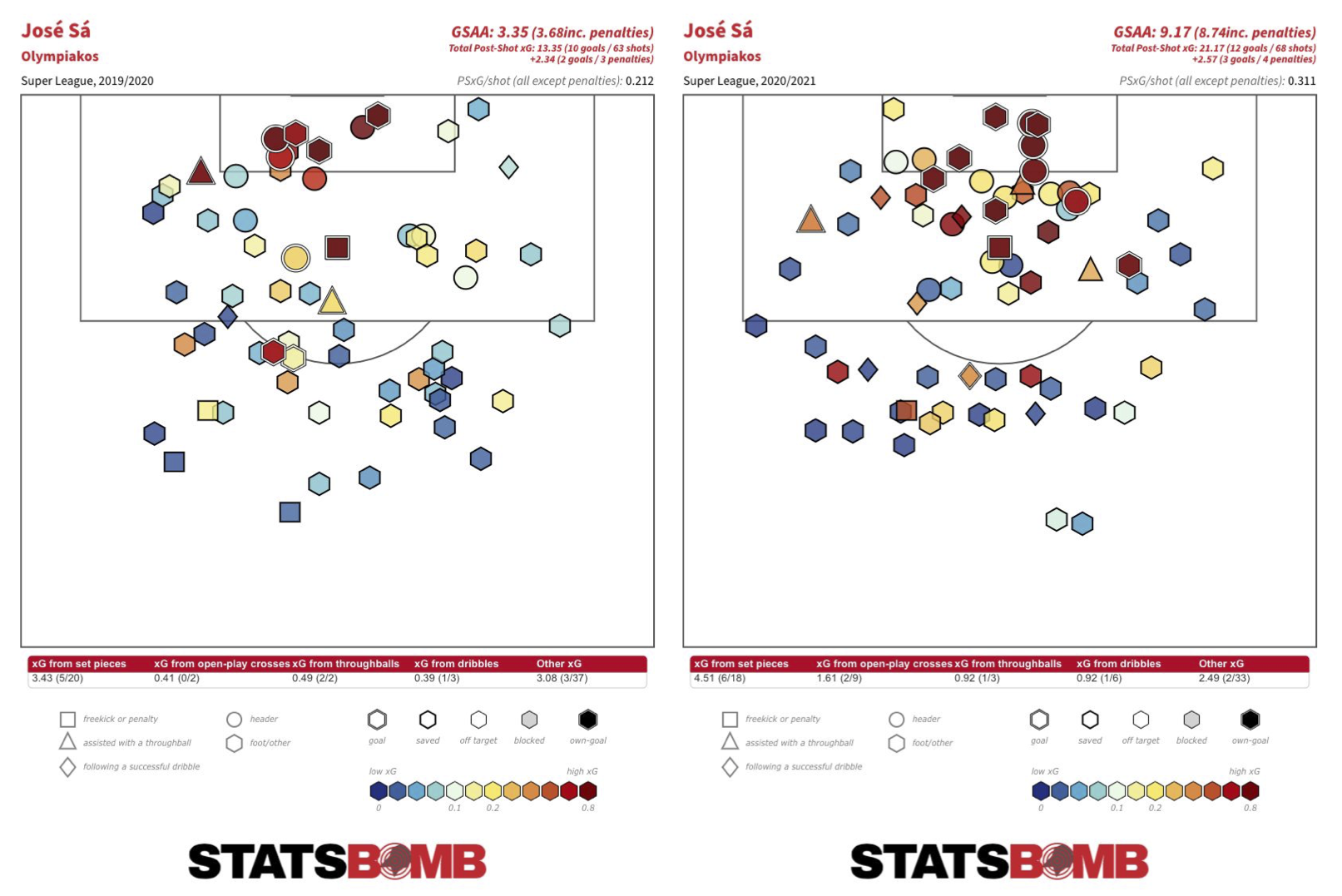
Rayan Aït Nouri has made his loan move from Angers permanent, while Wolves have also brought in Yerson Mosquera from Atlético Nacional in Colombia, a tall and aggressive young centre back who also doesn’t look too shabby with the ball at his feet.
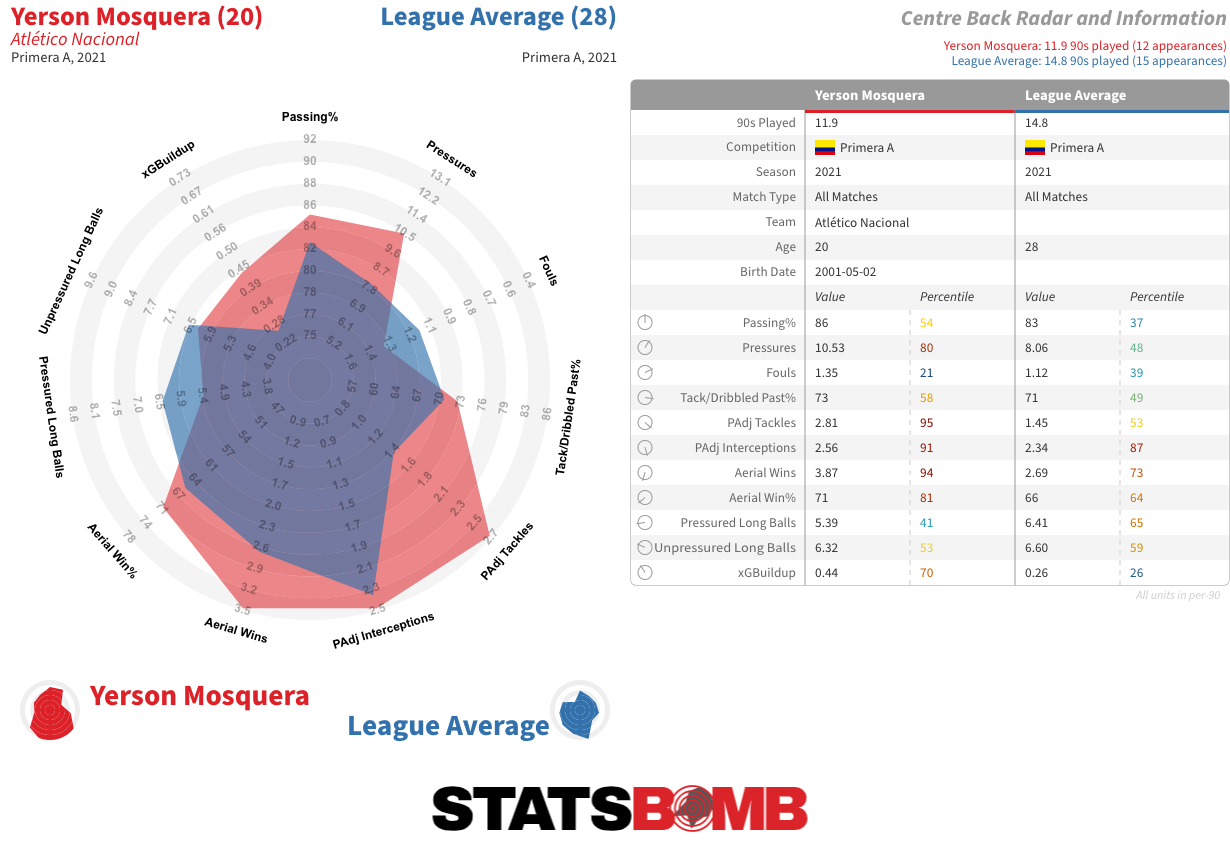
But perhaps the most intriguing signing is that of wide forward Francisco Trincão, on loan from Barcelona. He burst onto the scene with Braga in Portugal during the second half of the 2019-20 season and was immediately snapped up by Barça in a €35 million deal. He received a smidgin over 1,200 minutes of action across all domestic and European competition last season but has been loaned out in search of a greater workload.
The 21-year-old would seem to perfectly fit the profile of wide forward that Wolves currently have on their books. Last season, Wolves were more reliant on carries to advance the ball forward inside the attacking half than any other Premier League side -- 35% of their distance advanced was achieved via carries -- and both Adama Traoré and Pedro Neto ranked in the league’s top 10 in terms of longer carries (>=10 metres) that led to shots, assists and key passes, as well as to direct entries or passes into the penalty area.
At Braga, Trincão ranked fourth in the Portuguese league in terms of longer carries that led to direct entries or passes into the penalty area and also produced 0.73 shots per 90 from longer carries -- a higher figure that either Traoré or Neto managed last season. If he can get somewhere close to the overall figure of ~2.5 shots per 90 he posted at both Braga and Barcelona, he could prove an astute addition.
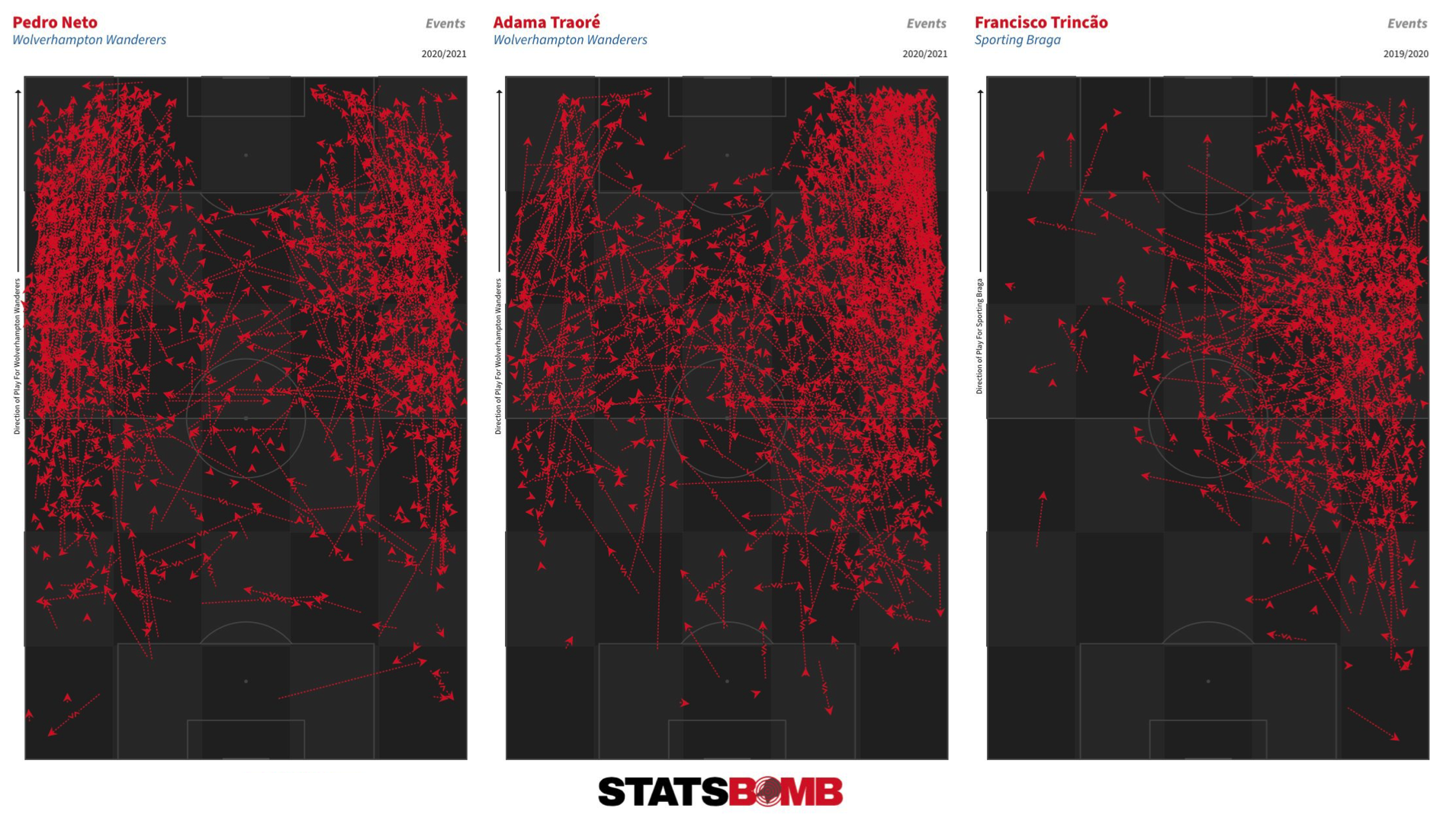
It will be interesting to see how Lage chooses to align his various wide forwards given his seeming preference for a 4-4-2 formation. Traoré has more of the attributes of a winger so will likely occupy one of the wide midfield slots, but Neto, Trincão and Daniel Podence could all potentially be used as either wide midfielders or central forwards alongside one from Jiménez -- in action once again after his long layoff -- Fabio Silva or maybe even Patrick Cutrone, back from a pair of unsuccessful loans and scorer of the solitary goal in Wolves’ friendly win over Real Betis.
Patricio aside, there have been no major outgoings to date, although Rúben Neves continues to be linked with a departure. We’ll have to wait and see how things shake out in the last month of the market, where Wolves will probably still add to their own defensive and midfield options.
Much of how Wolves’ season will go would seem to hinge on how well the squad can adapt to a more attacking approach. While there can be a reasonable fear that last season represented the start of a downward curve that might see them in genuine relegation trouble if things don’t immediately click, it seems more likely that Wolves will enjoy a solid (and perhaps even entertaining) campaign that nudges them back towards the top half of the table.
Want to read about another team? The rest of our Premier League season previews can be found here
If you're a club, media or gambling entity and want to know more about what StatsBomb can do for you, please contact us at Sales@StatsBomb.com
We also provide education in this area, so if this taste of football analytics sparked interest, check out our Introduction to Football Analytics course
Follow us on Twitter in English and Spanish and also on LinkedIn
